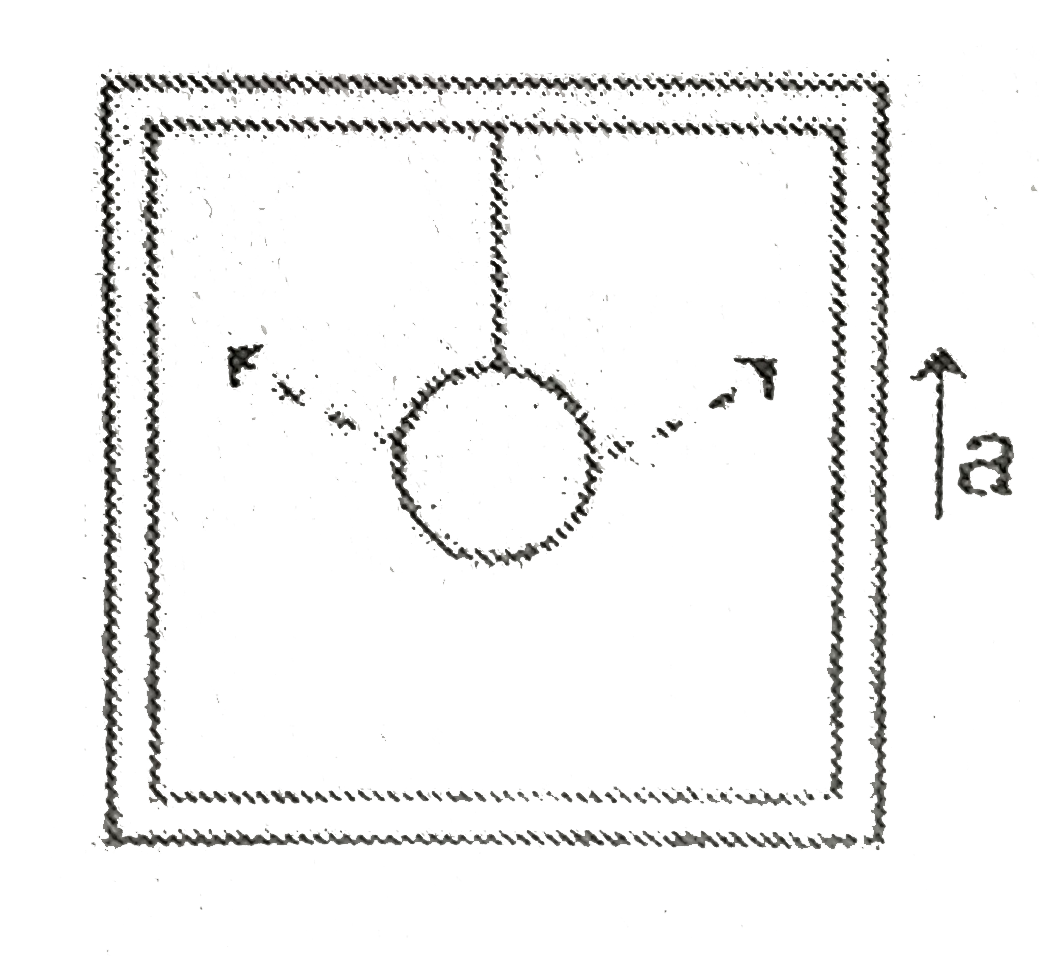The time period of a simple pendulum of length L as measured in an elevator descending with acceleration g / 3 is
2π√3Lg
π√(3Lg)
2π√(3L2g)
2π√(3L3g)
The correct Answer is:C
To find the time period of a simple pendulum of length L in an elevator descending with an acceleration of g3, we can follow these steps:
Step 1: Determine the effective gravitational acceleration
When the elevator is descending with an acceleration of g3, the effective gravitational acceleration geffective acting on the pendulum can be calculated as follows:
geffective=g−a
where a is the acceleration of the elevator. Here, a=g3.
Substituting this into the equation gives:
geffective=g−g3=g(1−13)=g(23)=2g3
Step 2: Write the formula for the time period of a simple pendulum
The time period T of a simple pendulum is given by the formula:
T=2π√Lgeffective
Step 3: Substitute the effective gravitational acceleration into the formula
Now, substituting geffective=2g3 into the time period formula:
T=2π
⎷L2g3
Step 4: Simplify the expression
To simplify the expression, we can rewrite it as:
T=2π√3L2g
Final Result
Thus, the time period of the simple pendulum in an elevator descending with acceleration g3 is:
T=2π√3L2g
When the elevator is descending with an acceleration of g3, the effective gravitational acceleration geffective acting on the pendulum can be calculated as follows:
The time period T of a simple pendulum is given by the formula:
Now, substituting geffective=2g3 into the time period formula:
⎷L2g3
To simplify the expression, we can rewrite it as:
Thus, the time period of the simple pendulum in an elevator descending with acceleration g3 is:
Topper's Solved these Questions
- BOOK - VMC MODULES ENGLISHCHAPTER - SIMPLE HARMONIC MOTION EXERCISE - LEVEL (2)40videos
SIMPLE HARMONIC MOTION
- BOOK - VMC MODULES ENGLISHCHAPTER - SIMPLE HARMONIC MOTION EXERCISE - 6-previous year question56videos
SIMPLE HARMONIC MOTION
- BOOK - VMC MODULES ENGLISHCHAPTER - SIMPLE HARMONIC MOTION EXERCISE - LEVEL 0 LONG ANSWER TYPE2videos
SIMPLE HARMONIC MOTION
- BOOK - VMC MODULES ENGLISHCHAPTER - ROTATIONAL MOTION EXERCISE - JEE Advanced (Archive) (True/False Type)3videos
ROTATIONAL MOTION
- BOOK - VMC MODULES ENGLISHCHAPTER - SYSTEM OF A PARTICLES & ROTATIONAL MOTIONEXERCISE - IN-CHAPTER EXERCISE F10videos
SYSTEM OF A PARTICLES & ROTATIONAL MOTION
Similar Questions
Knowledge Check
- Question 1 - Select One
The time period of a simple pendulum is given by T=2π√L/g, where L is length and g acceleration due to gravity. Measured value of length is 10cm known to 1mm accuracy and time for 50 oscillations of the pendulum is 80 s using a wrist watch of 1 s resloution. What is the accuracy in the determination of g?
A0.02B0.03C0.04D0.05
The time period of a simple pendulum of infinite length is (R=radius of earth).
View SolutionCompare the time periods of two simple pendulums of length 1 m and 16 m at at place.
View SolutionTime period of a simple pendulum in a freely falling lift will be
View SolutionCalculate the time period of a simple pendulum of length one meter. The acceleration due to gravity at the place is π2ms−2.
View SolutionA scientist measures the time period of a simple pendulum as T in a lift at rest. If the lift moves up with accelerationi as one fourth of the acceleratioin of gravity, the new time period is
 View Solution
View SolutionHow is the time period of a simple pendulum affected, if at all, in the following situations: The acceleration due to gravity is reduced to one-fourth
View SolutionHow does the time period (T) of a simple pendulum depend on its length (l)? Draw a graph showing the variation of T2 with l. How will you use this graph to determine the value of g (acceleration due to gravity) ?
View Solution

